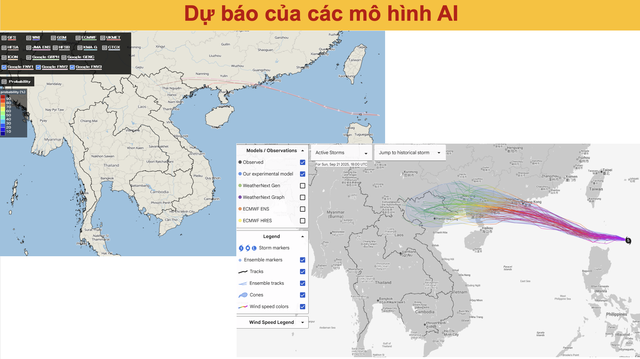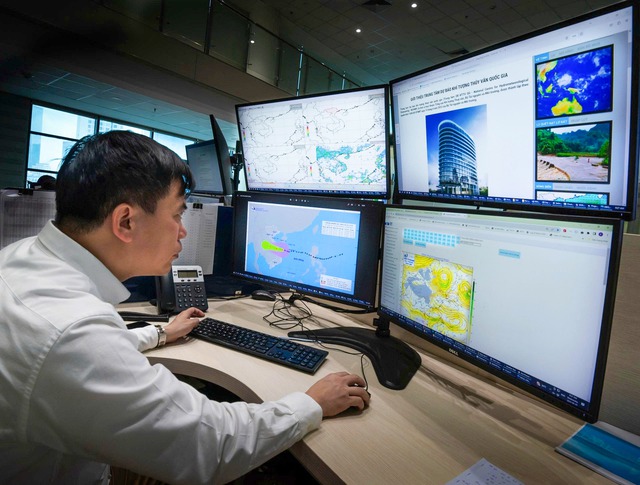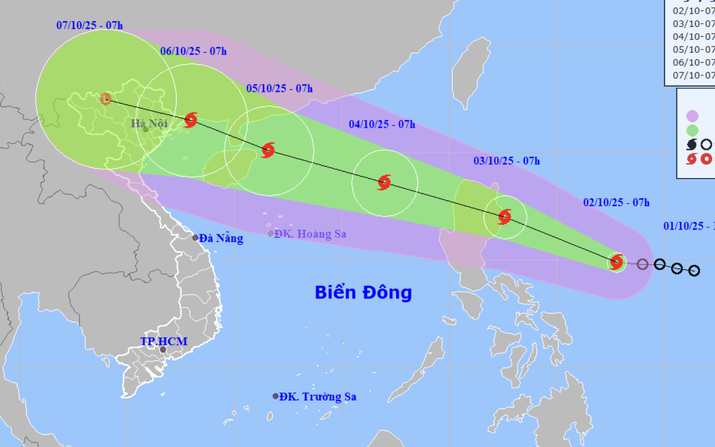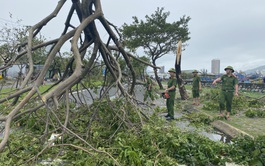
Forecasts generated by AI models are applied by the Vietnam Meteorological and Hydrological Administration. Photo: Vietnam’s National Center for Hydro-Meteorological Forecasting
The hydro-meteorological administration announced the advancement on Friday as the sector marked its 80th anniversary (October 3, 1945 - 2025).
The agency was awarded the first-class Labor Order by State President Luong Cuong but postponed its celebration to focus on storm forecasting amid the twin threats of storm Bualoi’s aftermath and storm Matmo, which is expected to enter the East Vietnam Sea late on Friday.
Over the past eight decades, Vietnam’s meteorological sector has expanded significantly, with 2,807 stations nationwide now, marking an increase of 44 percent compared with the 2016-23 period.
Automated observation has reached 65 percent in meteorology, 100 percent in rainfall and lightning, 69 percent in hydrology, and 74 percent in marine observation.
A modern weather radar network now provides nationwide coverage.
The highlight is the deployment of the CrayXC40 supercomputer with nearly 80 TFLOPS of power, capable of running high-resolution forecasts at three kilometers for the entire country and the East Vietnam Sea in just 30-40 minutes. This places Vietnam among the region’s top performers in computational forecasting.

The Vietnam Meteorological and Hydrological Administration applies modern technologies, including AI, to issue disaster forecasts and warnings. Photo: Vietnam’s National Center for Hydro-Meteorological Forecasting
During severe rains in September 2024, the supercomputer system provided updated three-kilometer rainfall maps, enhancing flood and landslide warnings at the commune level.
AI has also been applied in storm recognition, ultra-short-range rainfall prediction, and satellite image analysis.
A deep learning model integrating satellite and radar data helped detect storm Noru early when it entered the East Vietnam Sea in 2022, enabling 72-hour advance warnings.
Forecasting models now integrate domestic data with the European Center for Medium-Range Weather Forecasts’ outputs, reducing delays from 5-8 hours to just 2-3 hours.
A 32-member short-range and 51-member medium-range ensemble system generates probability maps and impact-based forecasts for more than 3,000 wards and communes.
The administration also applies AI-driven models, radar, and lightning detection to issue ultra-short-term (0-6 hours) warnings.
Its iWeather.gov.vn portal directly serves the public with real-time alerts.
Landslide and flash flood warnings now combine soil moisture simulations with rainfall analysis to deliver commune-level alerts online.
Thanks to technological innovation and improved staff expertise, Vietnam’s forecasting accuracy has significantly increased.
Storm forecasts now extend from 24 hours to three days, with warnings issued five days ahead.
The average position error of storms within 48 hours has been halved.
Heavy rain and flood forecasts are now reliable 2-3 days in advance, with an accuracy rate of 75 percent.
Forecasts for extreme cold and heat waves achieve 70-90 percent reliability.




Max: 1500 characters
There are no comments yet. Be the first to comment.